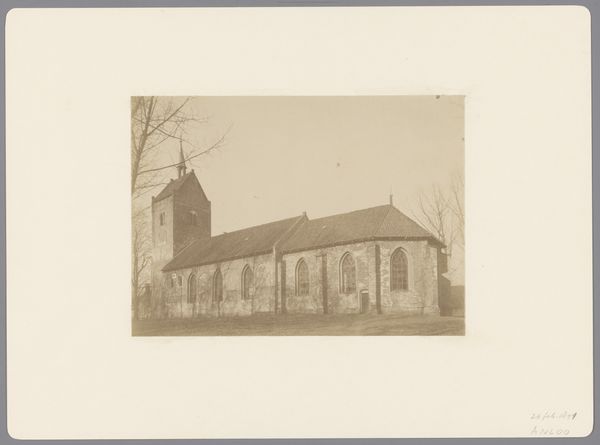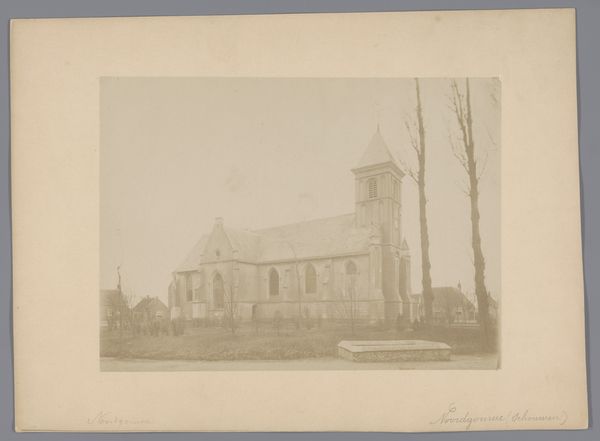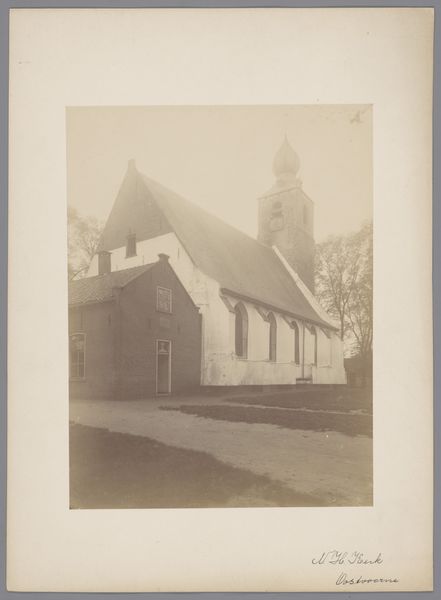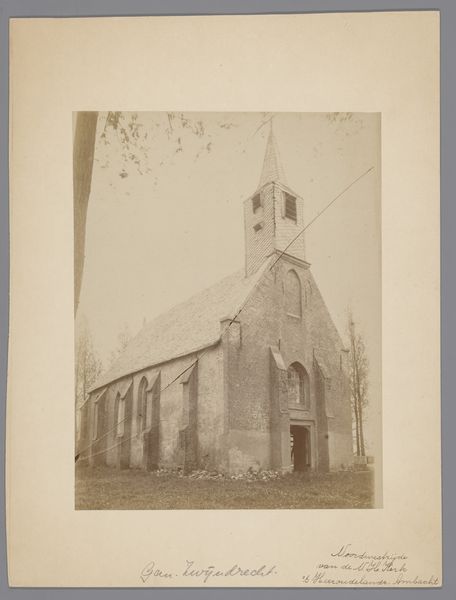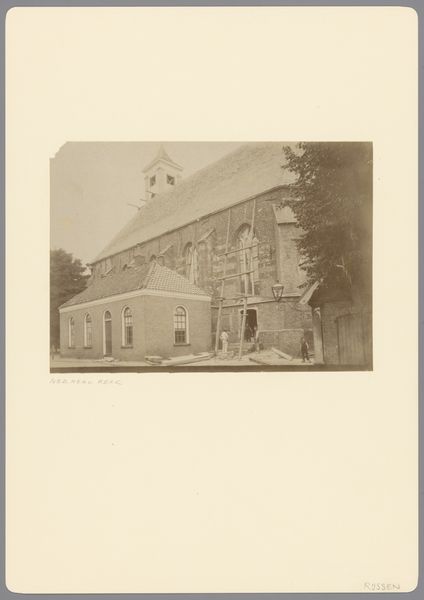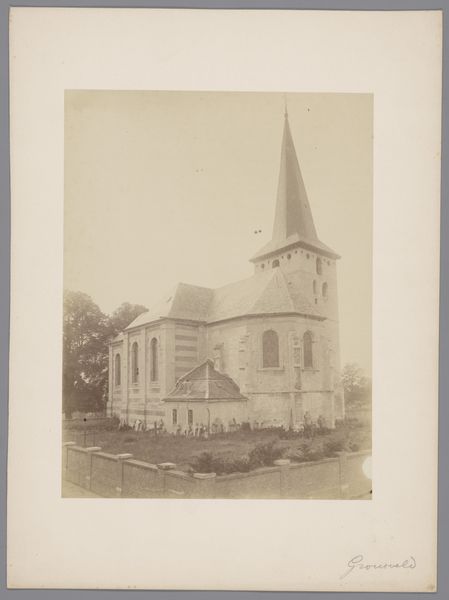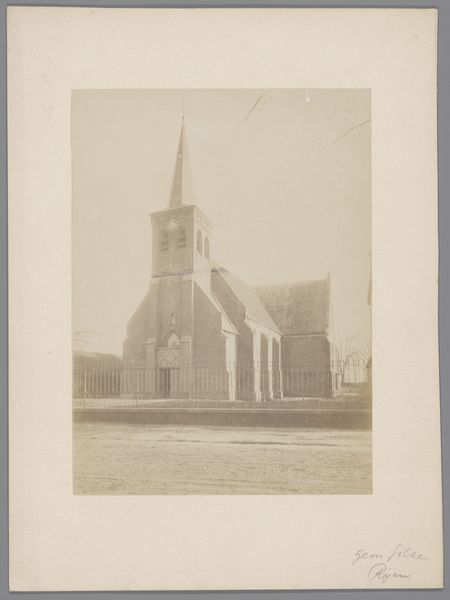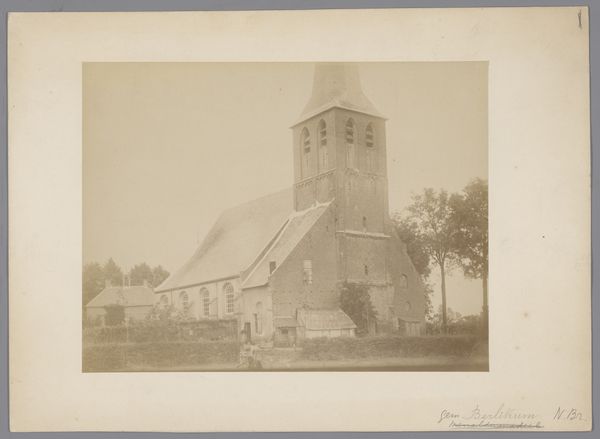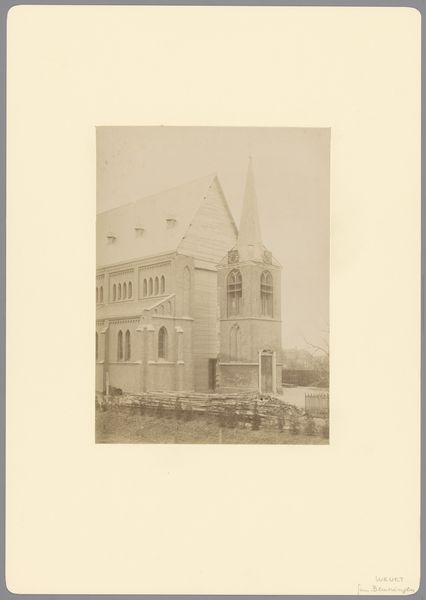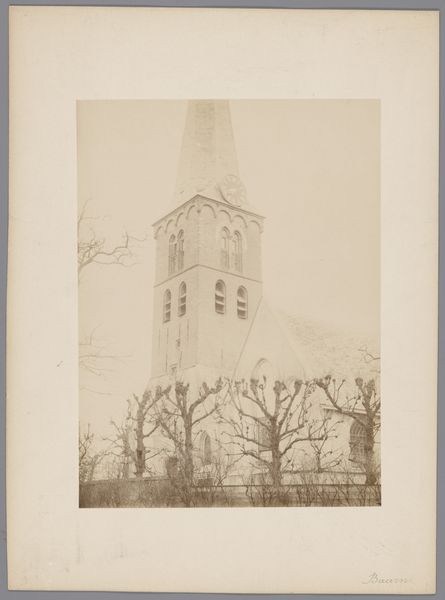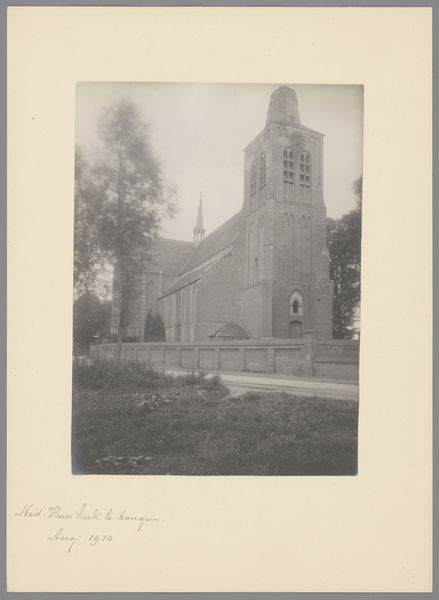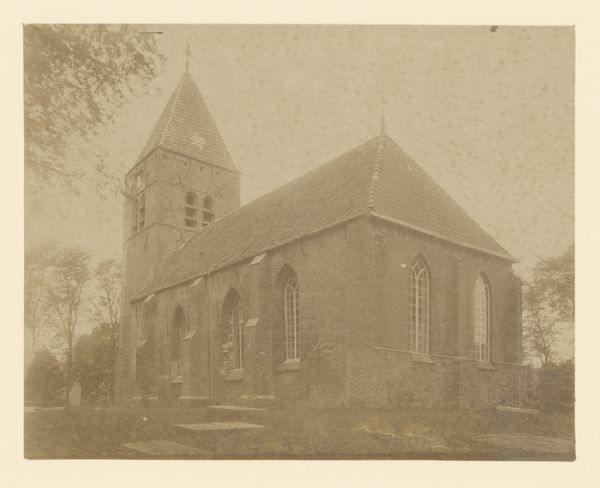
photography, gelatin-silver-print, architecture
#
landscape
#
photography
#
orientalism
#
gelatin-silver-print
#
19th century
#
architecture
#
historical font
Dimensions: height 112 mm, width 80 mm
Copyright: Rijks Museum: Open Domain
Editor: This gelatin-silver print by Hendrik Doijer, sometime between 1903 and 1910, depicts the Antoniuskerk, or 'Chinese Church,' in the Burenstraat. The weathered look gives it such a melancholic air. What symbols do you see at play in this photograph? Curator: I am drawn to the cross atop the steeple. Juxtapose that with the architectural style described as "orientalism," and what emerges is the fascinating visual of cultural exchange and perhaps even a tension between belief systems. The Western Christian symbol aspiring upwards and juxtaposed with Eastern aesthetics creates something entirely new. Editor: So it’s not just a landscape study, but more of a symbolic statement? Curator: Precisely. The 'Chinese Church' itself becomes a powerful icon. Consider also the act of photographing it; this isn't a casual snapshot. It's a deliberate capturing of a unique cultural artifact. This image encapsulates how people adapt and blend traditions, a form of visual creolization if you will. What meaning do you see in the deliberate framing of the path to the church? Editor: It makes me wonder about access. It almost feels restricted, which perhaps echoes larger themes of inclusion and exclusion that the community there experienced at the time. Curator: Indeed. Think about the historical context. Colonialism, missionary work… this image resonates with questions of cultural dominance and hybridity. The 'Chinese Church' isn’t just a building; it’s a testament to complex cultural narratives. Editor: This really shifted my perspective. I went in thinking about photography and architecture, but I am leaving thinking about how faith travels. Curator: And how objects and images continue to echo over time, each generation interpreting these stories anew.
Comments
No comments
Be the first to comment and join the conversation on the ultimate creative platform.
